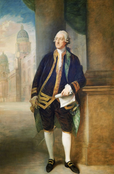As company patent counsel, we are frequently called upon to determine who is properly named as an inventor on a patent application according to the US patent laws when we prepare a patent application. It may surprise you when we as patent counsel add or sometimes even delete persons to the named inventors on a disclosure when we prepare a patent application. This can occur when we uncover facts during the disclosure meeting that we conduct prior to preparing the patent application.
But who is an inventor? Let’s look at the (unconfirmed) story of John Montagu, the 4th Earl of Sandwich:
As the story goes, Lord Sandwich was up late gambling with his friends one night. Not wanting to take a break from the gaming table, Lord Sandwich instructed his valet to bring him some meat tucked between two pieces of bread so that he could continue to hold his playing cards while eating.
Concerned about improving investment in technology in his realm, as well as paying some gambling debts, Lord Sandwich decides to commercialize his invention. He summons a patent attorney. But, who is properly named as an inventor on the patent application?
Under current US patent law, Lord Sandwich would be the sole inventor of the sandwich given these facts. He came up with ideas for solving the problem confronting him and he reduced his ideas to practice by giving his valet specific instructions describing how to make the object of his creation. The valet’s actions are simply that of an implementer.
Our cheeky example aside, the US patent laws take proper inventorship seriously. Incorrect inventors listed on a patent can be grounds for invalidating the patent altogether – a complete loss of the investment of time and resources in creating it! Inventors who are named on the declaration and assignment documents are each required to sign under the penalties of perjury.
For next time, consider:
1. Change the facts – what if the valet, while constructing the sandwich, noticed that it tended to fall apart. Wanting to please the Lord, he inserted a toothpick into the bread and meat to hold it together. What result?
Answer – If the patent attorney describes the sandwich with the toothpick in the patent application and writes a claim to both, the valet as well as the Lord are co-inventors at least of the claim that names both toothpick and sandwich.
2. Change the facts again – what if the valet, wanting to improve on the boring taste of the sandwich mixed up some pickles and vinegar and added this “pickled relish” to the sandwich. But, it turns out the relish improved the flavor of just about everything Lord had in his kitchen, so it was useful even without the sandwich.
What result?
Answer – Here the valet has made a second invention, since pickled relish could be useful on its own without the sandwich. If independently patentable, the patent attorney could prepare a second patent application directed to pickled relish and name only the valet as inventor. (Lord Sandwich had no creative input to the pickled relish concept, even though he may have played a pivotal role in product test).

